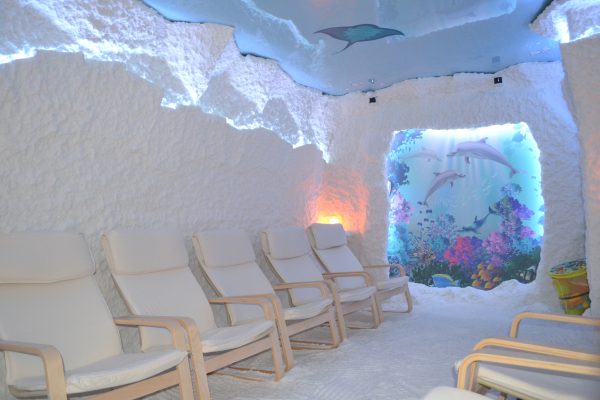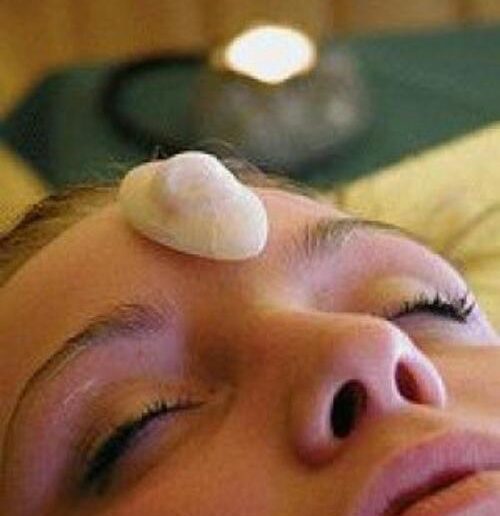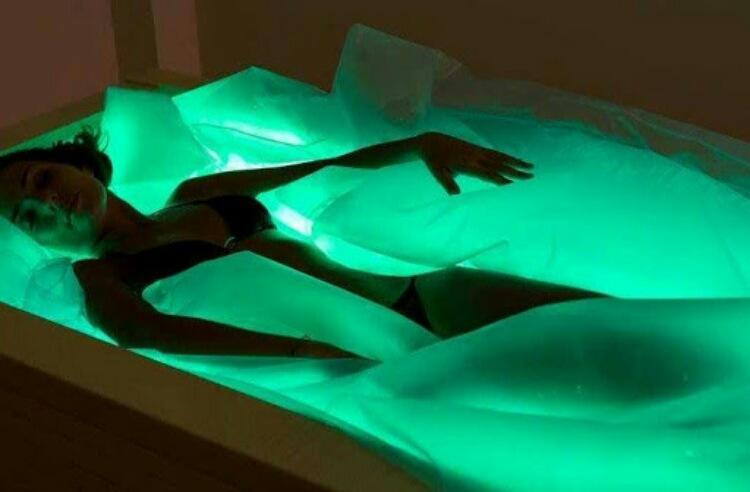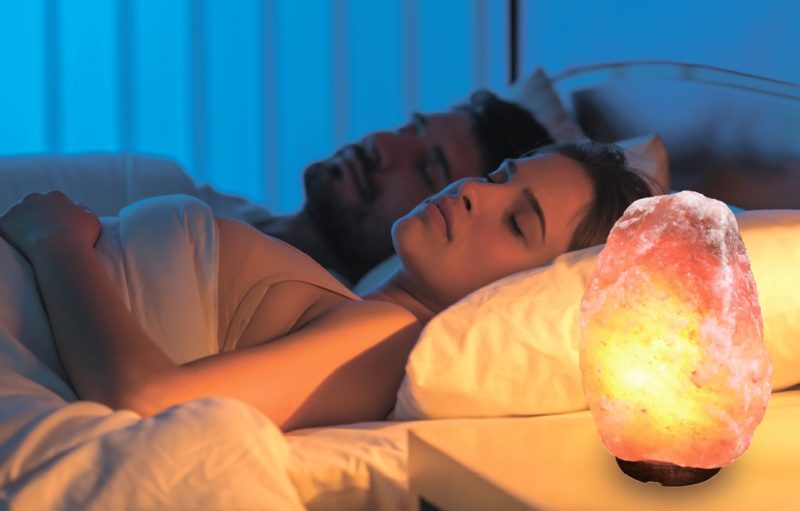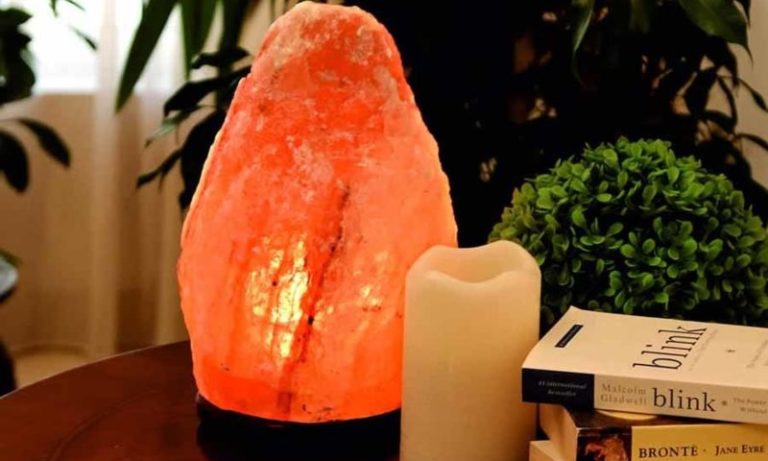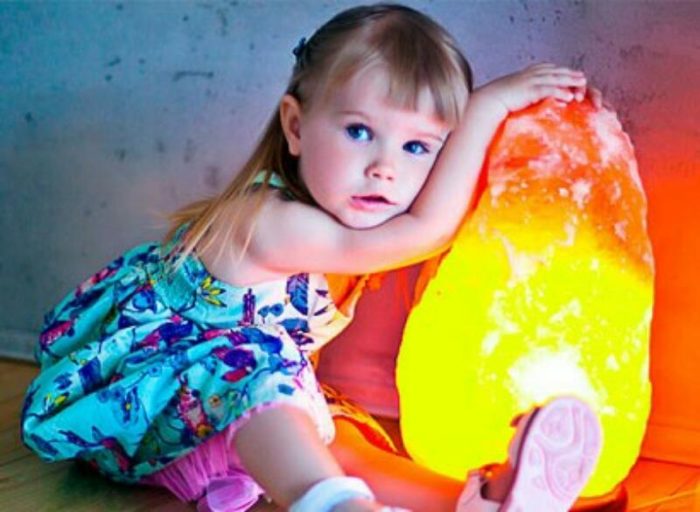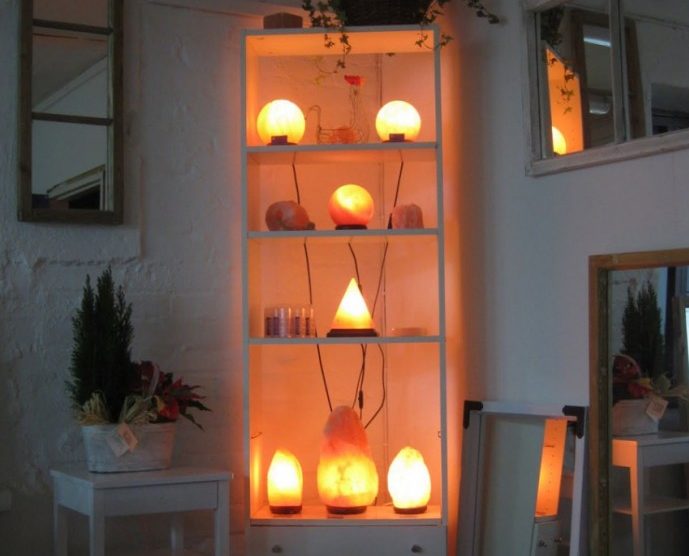What you need a salt lamp for
What is a salt lamp
The tendency to combine the beauty of the product with useful and even therapeutic properties is quite justified. The Chinese with their practice of Feng Shui and the use of plants, minerals, different palettes of colors to achieve a particular result have been particularly successful in this respect. A salt lamp is one of the devices that combines the effects of several medical practices at once:
- speleotherapy - treatment with caves, in this case, salt caves;
- Lithotherapy - treatment with minerals;
- Chromotherapy - therapy with color and their combinations.
A salt lamp is usually an ordinary incandescent lamp of low power installed in a plafond of rock salt of different shapes and colors. The shape of the plafonds is chosen for decorative reasons, but the color and composition of the salt used, as well as the type of light source are important in a therapeutic sense, and it is worth exploring this in more detail.
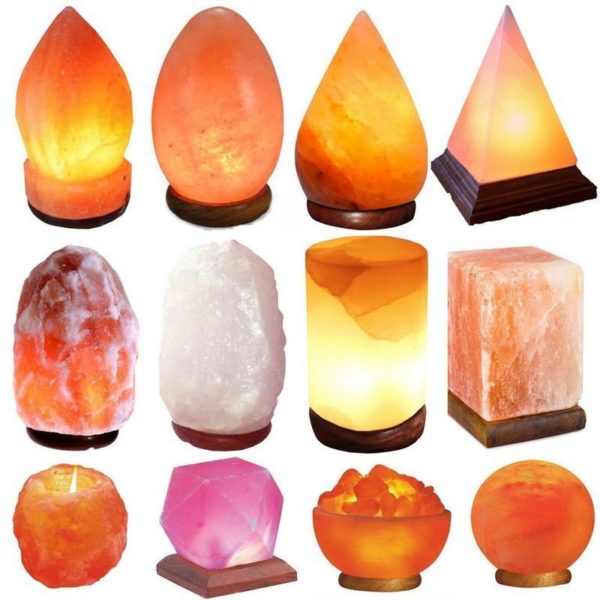
Principle of operation
The heat from the filament is transferred to the salt shell. Since sodium chlorine in its fossilized form absorbs the natural moisture of the room, when heated, its molecules evaporate into the air along with the accumulated liquid. In addition, according to the statements of lamp manufacturers, the mineral when heated in the dry state works like an air ionizer, emitting negative oxygen ions into the environment. Thus, the reproduction of pathogenic microflora is suppressed. Partial neutralization of harmful electromagnetic radiation from household appliances is also mentioned, although it is difficult to verify this fact.
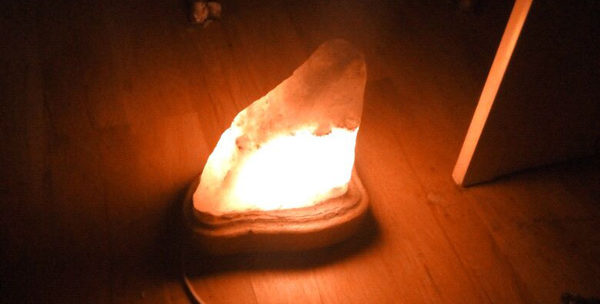
What is it used for
The idea of using rock salt for therapeutic purposes is not new. Back in the Soviet Union, there were entire spas located in the former miners' salt mines deep underground. Due to the inaccessibility of caves for treatment, they are arranged in the form of salt rooms with walls, floors and ceilings covered with slabs carved from the mineral. The essence of the therapeutic effect is the positive effect of NaCl molecules on the skin, respiratory, nervous, endocrine system of a person, which was noted in the employees of mining enterprises for rock salt extraction. Salt lamp used for home is an attempt to achieve a similar effect in the home, using the device as an ordinary lamp: night light, floor lamp, sconces, in general, additional lighting in a creative design and with therapeutic properties.

Is there an effect
Of course, the intensity of the action of the salt lamp is not comparable with a course of speleotherapy in a cave. But the daily use of the device allows you to reduce the severity of disease:
- respiratory system - bronchitis, tracheitis, sinusitis, rhinitis;
- Thyroid gland - hypothyroidism;
- Nervous system - increased nervous excitability, sleep disorders.
The positive effect is based not only on the inhalation of sodium chloride molecules, but also on the other elements that make up the natural mineral. Depending on the place of extraction, salt contains up to 28% of impurities, useful and not so useful. The useful ones are potassium, magnesium and iodine, whose ions are the first ones that we inhale. The calcium impurity practically does not evaporate, as well as iron, whose oxides are plentiful in the yellow and pink Himalayan salt.
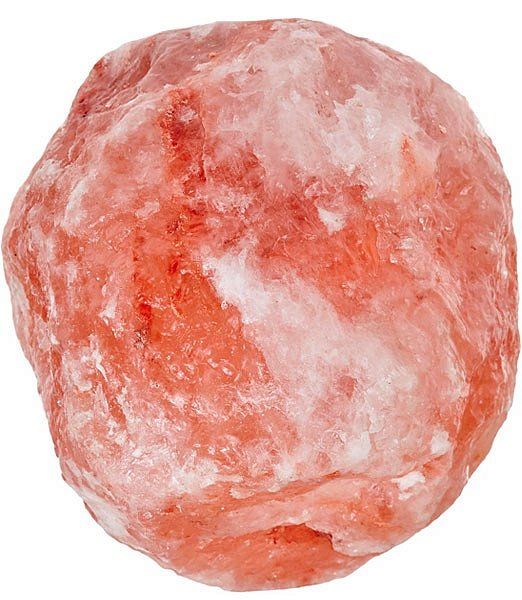
Also of little importance for the therapeutic effect are the organic humus deposits in the exotic black African salt,
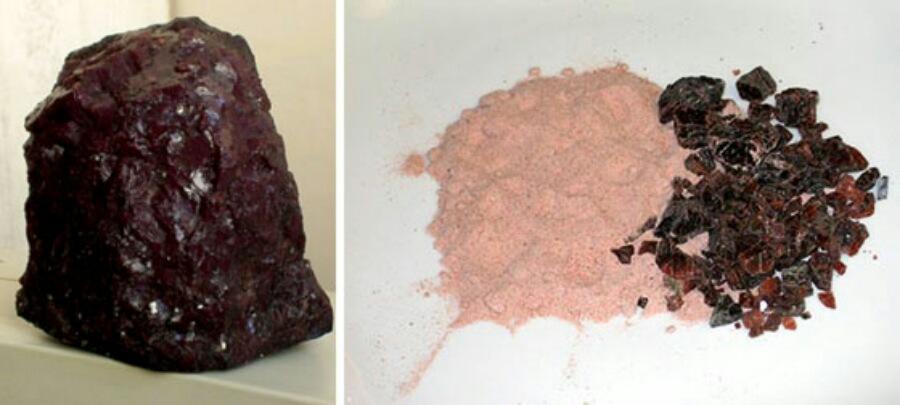
Clay in gray salt,
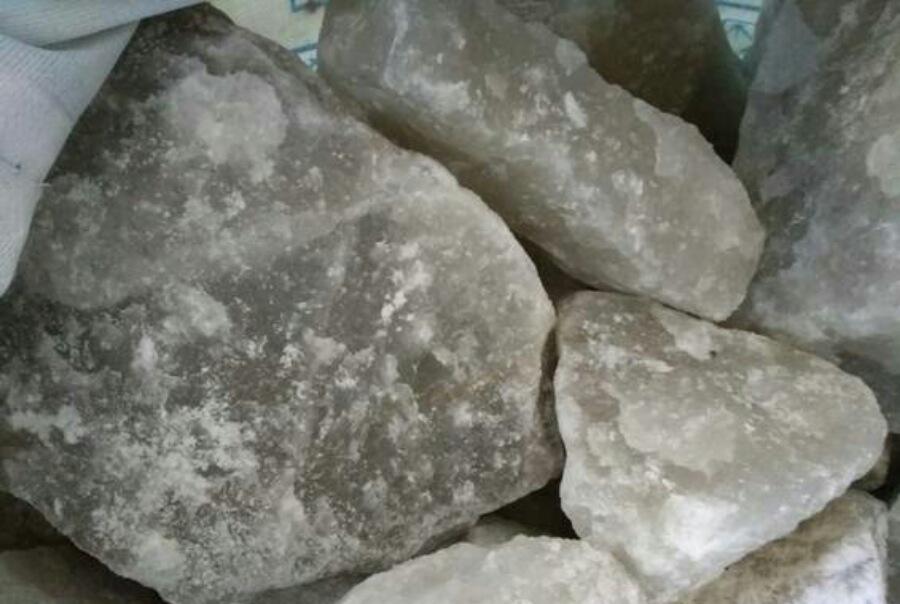
Potassium chloride in blue salt.
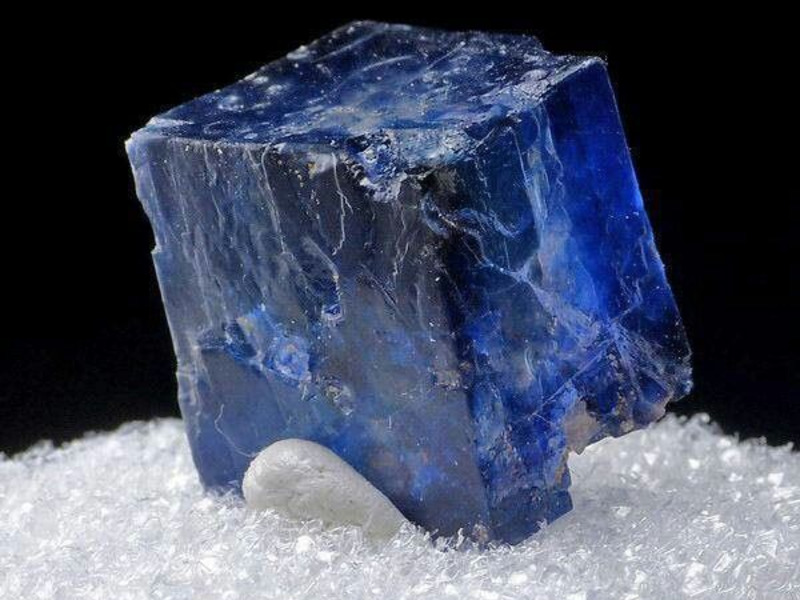
The main active ingredient is still NaCl, it is he who in reasonable concentrations has an anti-inflammatory and anti-edema effect on the human respiratory system.
In addition, it is noted that the lamp to some extent neutralizes unpleasant odors, especially the smell of tobacco smoke, dampness, mold. For the most part, the effect of the device is felt subjectively and is based more on the level of psychosomatics. It is difficult to objectively assess the effectiveness of the device due to the duration of use required for a noticeable result. The second effect of the lamp is based on the application of chromotherapy principles. It is believed that
- lamps the pink color is better to install in the parents' bedroom, as the pink color intensifies sensuality and emotionality;A pink night light made of salt.
- yellow ones - in the dining room, as they increase the enzymatic activity of the liver;
- Red ones - in the living room. They elevate the mood;
- blue and green - in a child's bedroom. They soothe and normalize the psycho-emotional background.
There is no point in questioning the theories of chromotherapy, since its basic principles were used long ago in China. Now the same principles are quite widely used by designers for marketing purposes in the design of facilities in appropriate palettes to manipulate the mood of users.
How to use a salt lamp
As the main source of light the device is ineffective because of the low power, but the design of decorative lighting with salt lamps is justified and has practical value. Due to the property of salt to actively absorb moisture, it is undesirable to install the device in the bathroom, near a pool or an aquarium. Otherwise, a white bubbly film will constantly form on the surface of the plafond, which spoils the appearance of the shell and accelerates its wear and tear. Evaporating, the salt loses mass, although only slightly, and in a humid environment, this process is more active. It is best to clean the surface from plaque, dust, and dirt with a brush, if it is uneven, as on the "Rock" shaped plafond.
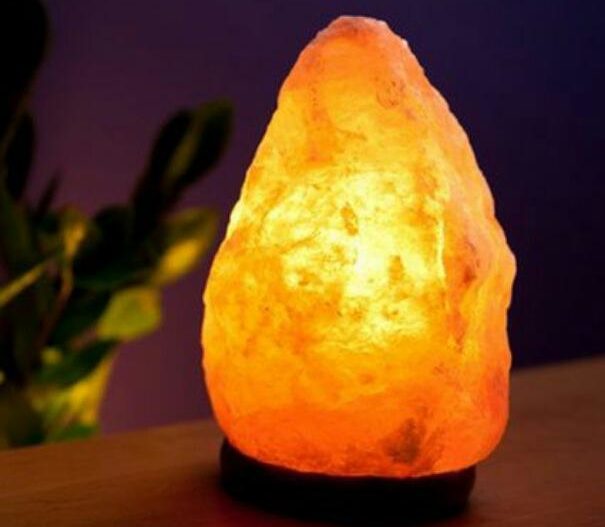
Smooth surfaces are simply wiped clean with a dry cloth.
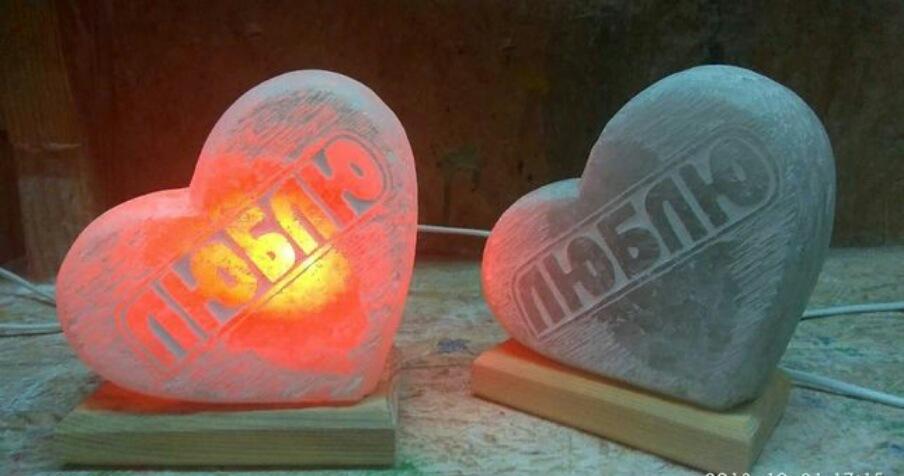
How long should it work
The salt lamp has such indications that with its efficiency it can work around the clock and its life is limited only by the life of the filament. There is no danger of NaCl overdose due to the small working area of the mineral evaporation. The use of the device as a constantly working night light is justified only in those cases when it is impossible to do without it. After all, the anti-stress hormone melatonin is produced during sleep only in complete darkness.
Is it possible to make a salt lamp with their own hands
For the basis, you can take any lamp with a standard socket E27 or a small E14. The lamp is needed exactly with an incandescent filament, because LED or fluorescent does not heat the crystal to its evaporation temperature.

The power of the light source, depending on the weight of the lamp is taken at the rate of 15 watts per 1 kg. For a medium-sized light bulb weighing 3 kg, a 45 watt bulb is suitable. The lamp holder is mounted in a wooden platform so that the bulb is installed vertically. To make the light, it is best to find rock salt sheets in stores that sell bath accessories, components for stoves and fireplaces. Four walls and the lid are cut out of the plates with a grinder, which are then fitted tightly so there are no gaps. The entire structure is fastened with a tin hoop as in the photo.
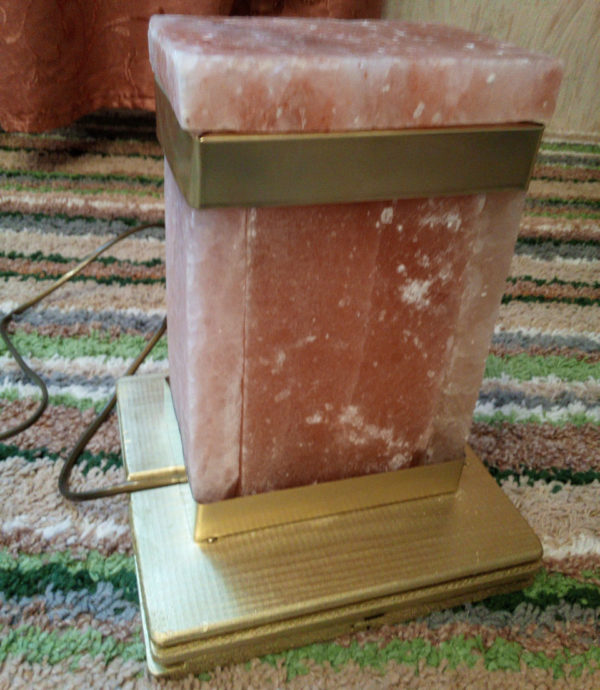
If there is a solid block weighing about 3 kg, then one of the sides is sawed off with a grinder to form an even end for the base. In it with a pen on a tree is drilled deepening under the light bulb with a reserve of at least 10 mm of its diameter. The whole construction is lowered on the stand with a screwed in bulb.
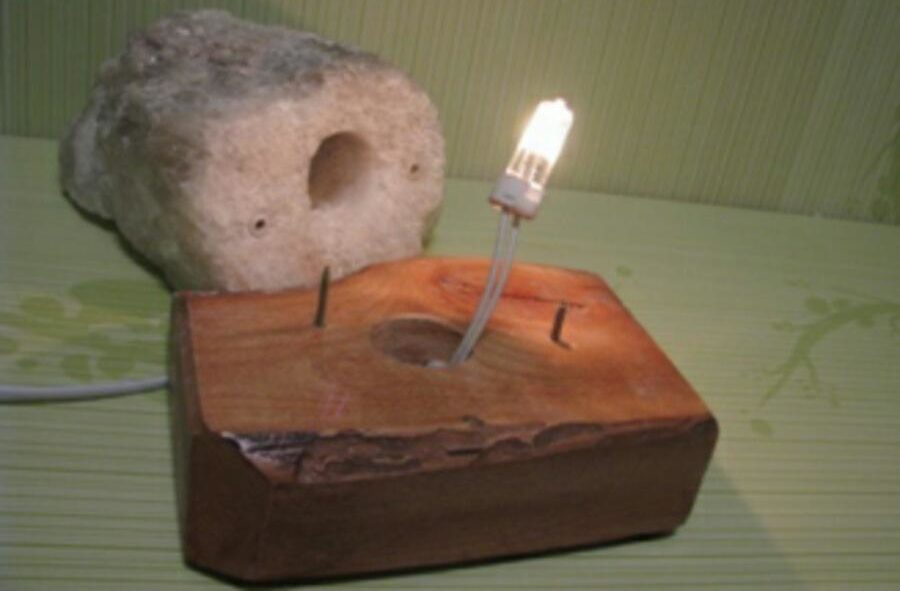
Another option is to use table salt in packs. To do this, several packs of sodium chloride are stirred in a container of water to a mushy consistency. The resulting slurry is poured into a round or square cone-shaped container for easy extraction. In the center of the mass is placed a glass beaker, bottom down to create a recess for the light source. The mold is left to dry near a heat source. The mortar can cure for up to several weeks and will remain damp. After curing, the resulting plafond is removed from the mold, the glass is taken out and lowered onto a stand with a light bulb. If desired, the shape is corrected using a drill with abrasive or cutting nozzles.
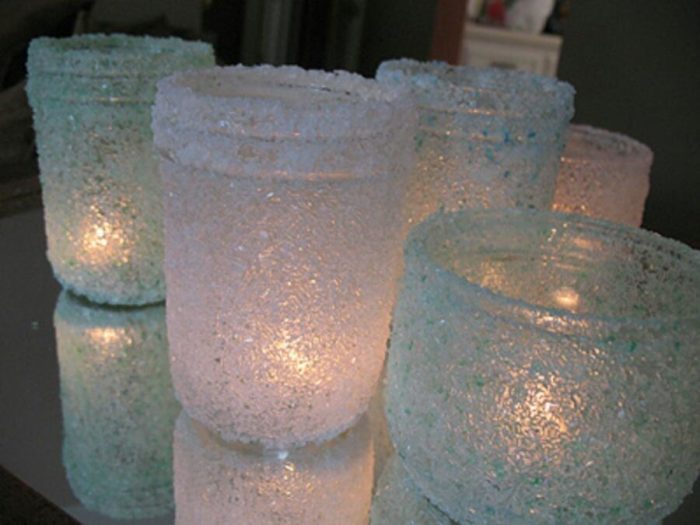
The final drying will occur already under the influence of heat from the filament. It is noted that all-stone products are more effective and durable than cast ones, so the solidified mortar should be handled much more carefully. It is best to wax the wooden stand, as the paint coatings will evaporate with an unpleasant odor when heated.
The benefits and harms of the device
Adults
There are only two contraindications for speleo-room therapy - diseases of the cardiovascular system and kidneys. The fact that the excess sodium chloride in the body creates an additional load on the heart by keeping in the bloodstream excessive amounts of fluid. With regard to salt lamps, due to their small area and efficiency, these limitations are irrelevant. A device weighing about 3 kg in a room of 25 m2 will not create concentrations of salts in the air sufficient for absorption into the bloodstream through the mucosa of the bronchi and lung alveoli.
Children and infants
For children, the most pronounced benefit of the salt lamp is on the respiratory system. In particular, with frequent rhinitis and sinusitis noted that after the installation of the lamp in the children's bedroom, the kids breathing easier by stopping the runny nose. Perhaps it is with this effect is due to the subsequent improvement of sleep and psycho-emotional background. Or maybe the evaporation of magnesium sulfides has a calming effect, so that the anti-stress factor leads to improved immunity.
In any case there is no evidence of any negative effect of the deviceAlthough a pronounced therapeutic effect is not to be expected from it. We can say with certainty that the salt lamp - is a natural air ionizer, reducing the activity of pathogenic microflora, beneficial effect on the health of children and adults.
In addition, it is a way to decorate the living area with health benefits. What you definitely can't do is treat the lamp as a panacea, pinning your hopes on it to the detriment of the main treatment prescribed by your doctor.
